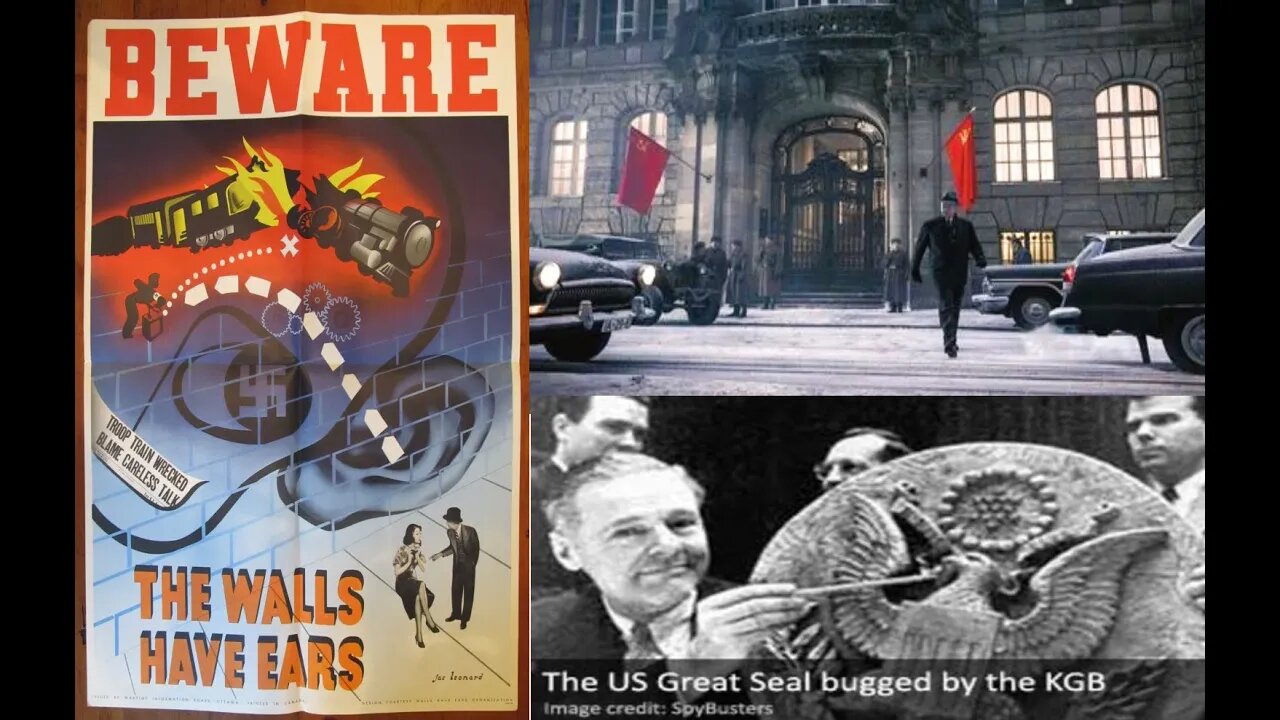Premium Only Content

The Spying Game- Walls Have Ears! Hidden Gem
The Spying Game - 1999
Part 2: Walls Have Ears
A Channel 4 series narrated by Alan Bates explores the fascinating world of the real-life spy and examines the technologies and techniques that have transformed espionage in
the Twentieth Century.
ALAN BATES narrates the second part of this fascinating series which sheds light on the dark history of espionage. Throughout the Cold War, the world's intelligence agencies fought a technological battle to steal secrets directly from the mouths of their enemies. From bugged shoes to trees full of hidden microphones, the eavesdroppers of the CIA, MI6 and the KGB reveal the amazing gadgets and techniques they developed to fight a real war of words.
"Tapping a phone is easy" explains MARTY KAISER, who used to manufacture bugs for the American intelligence community. Marty shows how bugging is not necessarily synonymous with high technology as he demonstrates the amazing ways in which eavesdroppers.
GLEN WHIDDEN, one of the first men to become an eavesdropper for the CIA, recounts how he travelled the world bugging Communist embassies and installations. One of the CIA's best men, he frequently worked alone, breaking into buildings and painstakingly concealing bugs in walls and under floors. It was a nerve-wrack.
But in the early days of the Cold War the KGB were well ahead of the Americans. LT. GENERAL SERGEI KONDRASHEV explains how, in the late 1940s, he and his KGB colleagues used a revolutionary bug to eavesdrop on the American Ambassador in Moscow. The KGB cunningly hid the bug in the Great Seal of America which the unsuspecting Ambassador hung on his office wall. Amazingly, the KGB was privy to his most secret conversations and later managed to plant another similar bug in the British Embassy.
However, as LEE TRACEY, a former eavesdropper for MI6 reveals, bugging was something at which the British also excelled. He demonstrates how they would cut holes in walls using specially designed drills to bug rooms from an adjacent building or, if they could gain access to the room, hide bugs which would last for years in doors and furniture.
In the 1950s, British and American intelligence worked together on one of the most audacious bugging operations of the Cold War. As retired officer DAVID MURPHY explains, in 1956 they dug a tunnel from the American sector of Berlin and tapped the main telephone lines connecting the KGB's Berlin headquarters with Moscow. Murphy testifies to the importance of the highly skilled GPO workers who installed the tap - "This could never have been done without British expertise in this area". Astonishingly, although Russians learned of the plan from George Blake, a Russian spy inside MI6, they let the tunnel operate uninterrupted for a year, fearing Blake would be exposed if they stopped it; even the KGB in Berlin were never told their telephones were tapped.
"Walls Have Ears" discloses the ingeniously simple and sometimes bizarre art of the expert eavesdropper and reveals the world they inhabit to be an incongruous mix of international coups and men in sheds tinkering with electronic paraphernalia.
-
 19:02
19:02
The Pascal Show
1 day ago $0.74 earnedNOT SURPRISED! Pam Bondi Is Lying To Us Again About Releasing The Epstein Files
5.75K5 -
 6:05
6:05
Blabbering Collector
17 hours agoRowling On Set, Bill Nighy To Join Cast, HBO Head Comments On Season 2 Of Harry Potter HBO!
7.13K1 -
 57:44
57:44
TruthStream with Joe and Scott
2 days agoShe's of Love podcast & Joe:A co-Hosted interview, Mother and Daughter (300,000+Facebook page) Travel, Home School, Staying Grounded, Recreating oneself, SolarPunk #514
24.1K1 -
 30:49
30:49
MetatronHistory
1 day agoThe Truth about Women Warriors Based on Facts, Evidence and Sources
23K12 -
 2:59:08
2:59:08
FreshandFit
12 hours agoA Sugar Baby & A Feminist ALMOST Fight Each Other
252K53 -
 6:24:23
6:24:23
SpartakusLIVE
11 hours agoFriday Night HYPE w/ YOUR King of Content
106K1 -
 2:27:53
2:27:53
Laura Loomer
8 hours agoBREAKING: MTG Resigns From Congress, Mamdani Meets Trump
72.8K107 -
 3:30:10
3:30:10
PandaSub2000
1 day agoDisney & Buzz Trivia | PHOENIX & HAVIX (Original Live Version)
35.5K -
 15:23
15:23
T-SPLY
13 hours agoBUSTED Assistant Principle And Brother Arrested For Wanting To Kill ICE!
33.2K13 -
 22:06
22:06
Jasmin Laine
13 hours agoCBC STUNNED Into SILENCE After JD Vance’s BRUTAL Message to Canadians
25.6K17